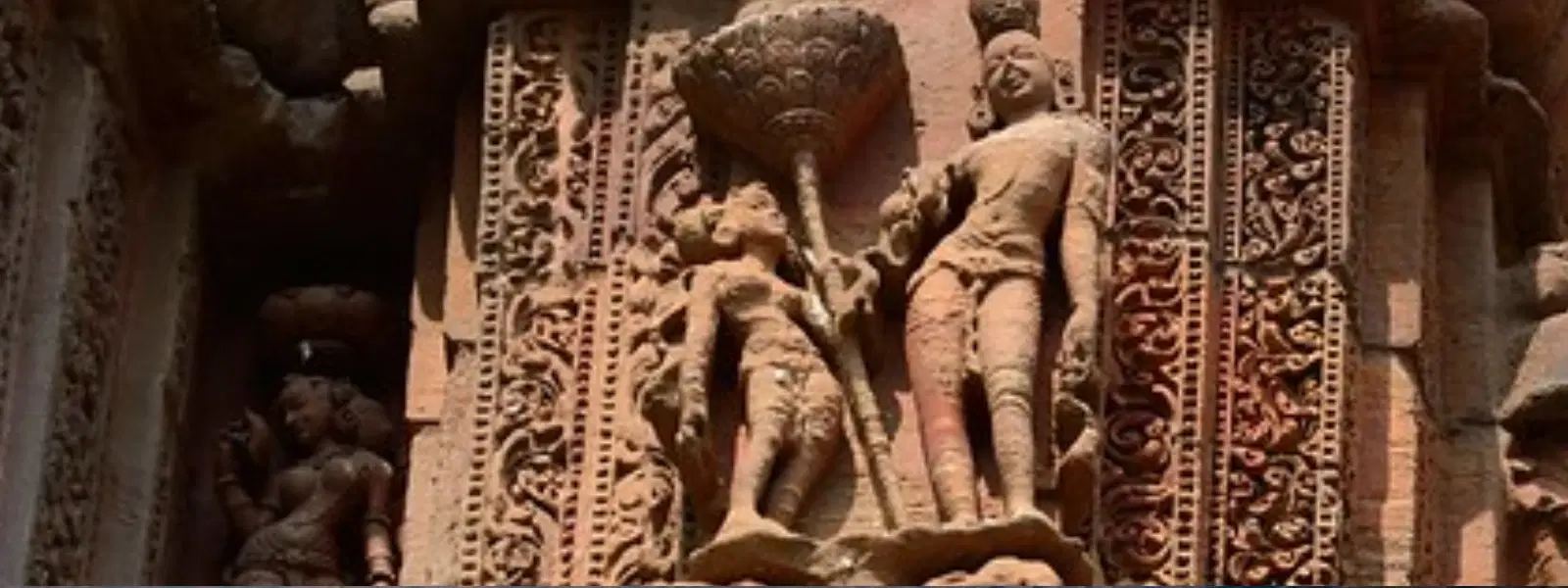
Hotels
•03 min read

The Rajarani Temple in Bhubaneswar stands as a living testament to Odisha's rich heritage, captivating visitors with its intricate stone carvings and architectural brilliance. In this blog, you will explore the fascinating details of the Rajarani Temple, with a special focus on its exquisite stone carvings, compelling history, and unique architectural design. Whether you are a history enthusiast, an ardent admirer of Indian temple art, or planning your next journey to Bhubaneswar, this narrative will answer your most pressing questions and ignite your curiosity about this magnificent monument.
Often known as the "Love Temple," the Rajarani Temple distinguishes itself from other temples in Odisha by the absence of a specific presiding deity. Instead, its elaborate erotic and symbolic carvings have sparked interest and debate for centuries, making it a subject of intrigue and admiration among visitors and scholars alike.
Built during the 11th century under the influential Somavamshi dynasty, the temple not only exhibits the evolution of temple architecture in Odisha but also mirrors the cultural and historical transitions of its era. The shifting styles evident in its design are a testament to the artistic prowess of past craftsmen.
As one of Bhubaneswar's key heritage sites, the Rajarani Temple attracts tourists from all over India. Its captivating stone sculptures make it a must-visit spot, particularly for those eager to immerse themselves in ancient Indian temple art and Odisha temple carvings.
The temple is distinguished by its construction in the pancharatha style, meaning its base is divided into five distinct sections. This design not only enhances the structural elegance but also creates a lasting impression with its refined symmetry and balance.
The Rajarani Temple features a vimana (tower) and a jagamohana (assembly hall) richly adorned with intricate stone sculptures. These detailed carvings complement the overall design and showcase the high level of craftsmanship during the 11th century.
An additional charm lies in the materials used; the subdued hues of dull red and yellow sandstone enrich the visual appeal of each sculpture and carving, contributing to the temple’s timeless beauty.

The temple’s walls display a variety of sculptures that include depictions of the Ashta Dikpalas, or guardians of the eight directions, along with celestial beings and scenes illustrating daily life. Each figure is meticulously crafted, providing insight into the cultural traditions of ancient Odisha.
The stone carvings of Rajarani Temple are a blend of religious, erotic, and secular themes. This mix reflects the cultural ethos of its time, where spirituality intermingled with human emotions and everyday life, resulting in art that remains evocative and timeless.
There is a striking resemblance between the carvings at Rajarani Temple and those at the famed Khajuraho temples. Both showcase an intense focus on human emotions and relationships, uniquely capturing the sensual and aesthetic spirit of their respective eras.
Beyond their visual appeal, the carvings symbolize deeper themes such as fertility, prosperity, and the ever-repeating cycle of life. These motifs invite visitors to ponder the beliefs and values that shaped ancient Odisha culture.
Did you know? The Rajarani Temple’s carvings are considered a precursor to the architectural styles seen in later temples across Odisha, showcasing an evolution in design and artistry.
Strategically situated near other significant temples like Mukteshwar Temple and Lingaraj Temple, Rajarani Temple is woven into the historic fabric of Bhubaneswar. Its location enriches the overall experience for those embarking on journeys to explore these ancient marvels.

Though it lacks a dedicated presiding deity, the temple’s artistic elements and architectural form significantly contribute to Odisha’s spiritual and cultural legacy. Its carvings continue to be a source of inspiration and reflection among visitors.
A key attraction among Bhubaneswar heritage sites, the Rajarani Temple draws travelers seeking to witness the splendor of ancient Indian temple art. The seamless blend of historical significance and aesthetic brilliance makes it an essential stop on any tour of Odisha’s temple architecture.
The Rajarani Temple is renowned for its intricate stone carvings, distinctive lack of a presiding deity, and remarkable architectural design which have earned it the nickname "Love Temple."
The temple features a pancharatha style platform, a vimana (tower), and a jagamohana (assembly hall) intricately carved with sculptures made from yellow and red sandstone.
Mukteshwar Temple was constructed during the Somavamshi dynasty, the same rulers associated with the creation of Rajarani Temple.
Lingaraj Temple, dedicated to Lord Shiva, is one of the city's oldest temples, famed for its Kalinga architectural style and deep spiritual significance.
Located in Bhubaneswar, Odisha, the temple is easily accessible near other historical sites like Mukteshwar and Lingaraj temples, making it a focal point for heritage tourism.
The Rajarani Temple in Bhubaneswar serves as an extraordinary example of ancient Indian temple art and architecture. With its detailed stone carvings, distinctive design, and timeless historical significance, the temple remains a vital cultural landmark. By delving into its artistic and architectural details, visitors are offered a unique glimpse into the heritage and spiritual legacy of Odisha.